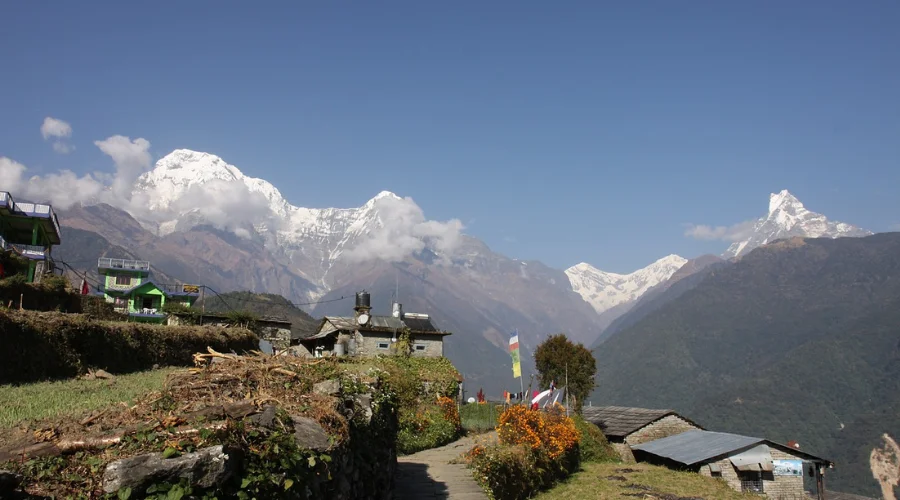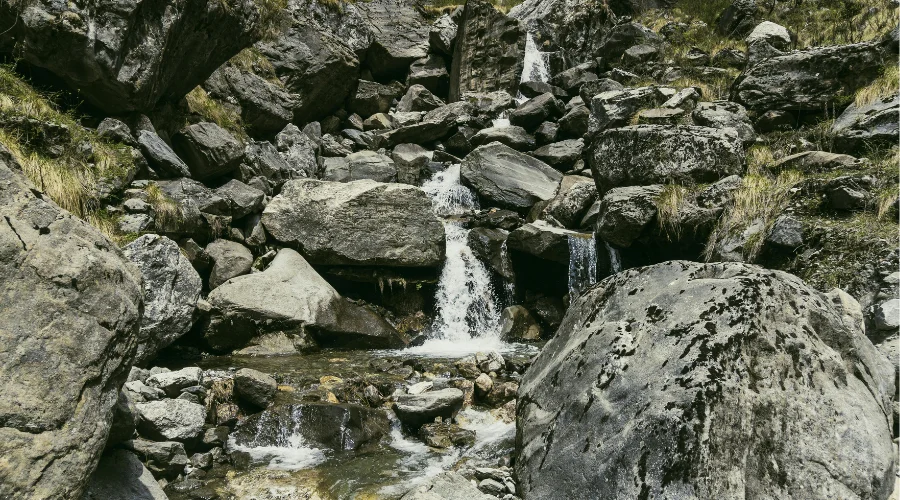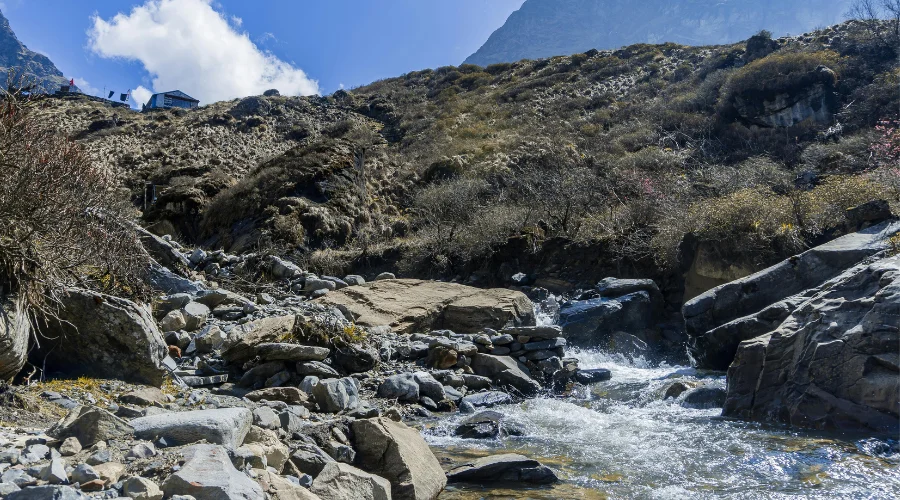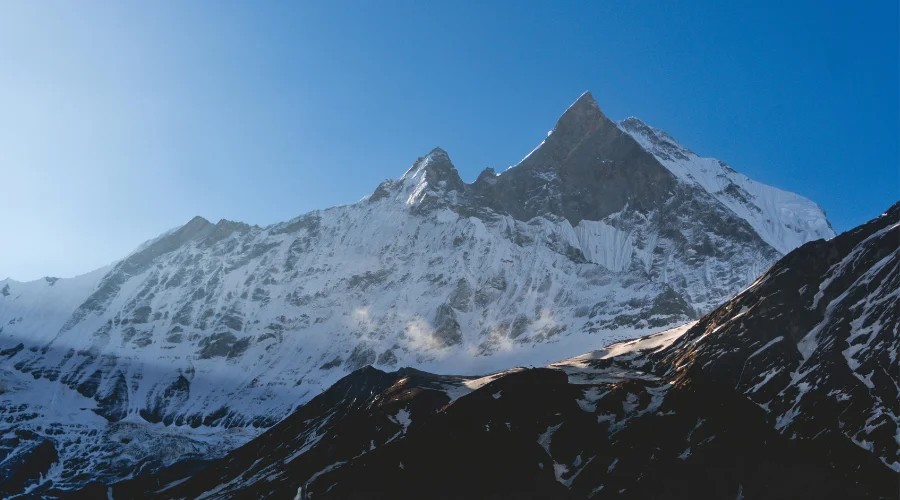Annapurna Base Camp Trek is arguably one of the easiest and most beautiful trekking destinations in Nepal.
It has mountainous scenery that is breathtaking as well as picturesque villages, and is high in cultural attractions, hence attracting thousands of trekkers annually.
But by the time you load up your bags and lace up your boots to go on this hike, you should have an idea of the Annapurna Base Camp Trek difficulty.
Annapurna Base Camp Trek difficulty can be described as a moderate trek. You should be of normal fitness, have an optimistic outlook and have the capability to walk 5-6 hours a day, to do this trek.
It can be a once-in-a-lifetime trek, yet despite you being a first-time trekker, you can do the Annapurna Base Camp trek with the right planning and a suitable mindset.
How hard is the Annapurna Base Camp Trek?
Can a beginner do the Annapurna Base Camp Trek? Annapurna Base Camp difficulty trek falls under moderate level of trek. This means that it is neither a very difficult trek nor is it an easy walk in the park.
The technical climbing skills are not necessary. But in this range, you will require good stamina, little fitness and some mental power. It is a very long, steep climb with stone stairs and walking at high altitude.
The typical range of walking per day is the 5-7-hour range that an average hiker exercises.

The Annapurna Base Camp ends at 4,130 meters high, which is high enough to get altitude effects. The ascent, however, is gradual, and this will avoid the risk of altitude illness of people.
There is a well-established road, and there are heaps of teahouses where you will even be able to hire guides or porters, which is why you can do this trek.
If the novice trekker is prepared enough, odds are that he or she can complete the ABC trek too by taking it slowly. It is rather challenging yet attainable and extremely gratifying.
If you are looking for a 5 Days Short ABC Trek, Himalayan Trekking and Tours will arrange it.
Annapurna Base Camp Trek Distance and Duration
Annapurna Base Camp trek duration is 7-10 days. It depends on the pace and destination of your choice. You will be averaging 5 to 7 hours of trekking per day.
There are days with steep ascents or long descents, which are always more demanding than other days. The breakdown below should help you gain a picture of the flow of the trip:
Day 1: Arrival in Kathmandu
No hiking, but only rest and prepare.
Day 2: Route Kathmandu to Pokhara
The drive from Kathmandu to Pokhara is a very long drive (6-8 hours) and is physically not tiring, but it can be tiresome because of the bumpy roads.
Day 3: Drive to Nayapul & Trek to Ulleri (4-5 hours of walking)
You start your journey today. Even though the trek is not very long, it is very strenuous due to the steep stone stairs ascent to Ulleri. This is among the initial challenging ascents.
Day 4: Trek from Ulleri to Ghorepani (4 -5 hours walk)
A long, gradual ascent into the woods. It’s not that hard, yet you can feel the altitude increase and the constant rise.
Day 5: Trek from Ghorepani to Poon Hill and Tadapani (6-7 hours)
This is among the most fatigued days. You will start very early in the morning to climb to Poon Hill to have sunrise. Then, it takes a long way down and up to Tadapani, and it can be tiring.
Day 6: Trek from Tadapani to Chomrong/ Sinuwa (5- 6 hours)
It is a day full of ups and downs: a drop down to the river and a very intense climb up to Chhomrong. A nice day of exercise.
Day 7: Trek from Chhomrong to Himalaya (6-7 hours)
This day will be longer and will involve some climbing and flat paths. As you move higher, the air tends to thin, making it more difficult.
Day 8: Trek from the Himalaya to Annapurna Base Camp (6- 7 hours)
It is a great day. You will get a feeling of the altitude here. One does not walk on progressively strenuous slopes, but at high altitudes, even the walking pace is reduced. The top of the ABC, 4,130m, will be a key highlight and challenge of endurance.
Day 9: Trek from ABC to Bamboo (6-7 hours)
A long time of descent. It is not an easy activity to go downhill, though it feels like it. This day is difficult as you will move all the way back, descending.
Day 10: Trek from Bamboo to Jhinu Danda (5 hours walk)
Partial use of the day. You will conclude with a great relaxing moment at Jhinu Hot Springs, which relieves your muscles.

First, you will climb uphill to Chhomrong and rest for a while. This day can be one of the hardest days since you will need to walk around 2.5 hours up the steep descent of Jhinu Danda stairs.
Day 11: Trek to Nayapul, and Drive to Pokhara (4 hours walk + 5 hours’ drive)
The last day of walking with you will be as much downhill, or level, as you can get. An enjoyable ending to your journey.
Day 12: Pokhara to Kathmandu journey by road
A road trip is long, and you will be exhausted but calm and relaxed, with nice memories.
Risk of Altitude Sickness in the Annapurna Trek
Annapurna Base Camp Trek will take you to the altitude and the surroundings of the lowlands (1000 meters) will also lead you to the topmost of the base camp (4,130 meters).
It is also important to gradually go to this altitude so that your body can acclimatize to a higher altitude. To reduce the altitude sickness, or what most people call Acute Mountain Sickness, also known as AMS.
You begin the trek at Nayapul, which lies at an altitude of 1,070 meters. The ascent through Ulleri (2,070 m), Ghorepani (2,860m), Chhomrong (2,170m), and Himalaya (2,920m) acclimatises your body to the thinner air.
On the Annapurna Base Camp (4,130 m), oxygen is least available at the lowest altitude as compared with the sea level.
Those situations at an altitude of 2,500 meters or more cause sickness. The threat in this trek is the following one, especially when you have passed Ghorepani, especially moving ahead of Chhomrong and the Himalaya.
When the trekkers have already reached the higher levels, most of them begin to experience the mild symptoms that may include headaches, nausea, or dizziness, or the inability to sleep.
Altitude sickness also varies with seasons throughout the year. It is safer and the weather is predictable during the popular trekking seasons like spring (March-May) and autumn (September-November). But during these seasons, a trek is easier to take, and one can be safe throughout the trek.
It can be even more hazardous, though, in the event of excessive rains during the rainy (monsoon) season (available in the months of June to August), which tends to slow you down and increase your exposure at high altitude.
During the winter, when normal snowfall occurs (December to February). Snow may make the pathway hard to access or subject an individual to altitude sickness because the temperature is lower with small quantities of oxygen in the air.
Annapurna Base Camp Trek Route Difficulty
Annapurna Base Camp Trek is among the treks that are easier to navigate through since all the paths are well signposted. The nature of the trails is also different, and it is both scenic and strenuous.
First, the trek passes through lovely forests full of evergreen trees that have rhododendrons and pine trees. It is all stone and dirt going up there, with some flat places, which are easy walking.
The steeper the stone staircases, the higher you ascend. It is not only special footings that are needed, but also becomes a physical challenge, especially in the area between Ulleri and Ghorepani.
The trail after Ghorepani is more open and is characterized by hillocks and terracing. You will pass through the traditional villages and stone houses and get a feel of the local culture as prayer flags adorn the trail.
After Chhomrong, we turn, and the path is rockier. You will have bridges of wood over shallowly flowing rivers, and you will go by the edge of mountain passes.
If you are interested in a Luxury Annapurna Base Camp Trek to reduce difficulties, then please book with us.
Seasonal Weather Difficulty of Annapurna Base Camp Trek
The weather also contributes a lot to how challenging the trek to Annapurna Base Camp can become. Nepal has four seasons, namely spring, summer (monsoon), autumn and winter, and all have their own difficulties.
One of the best trekking seasons in the ABC Trek is during the Spring (March to May). The weather is usually pleasant and sunny, with rhododendron flowers in full bloom all around the tracks.
But the temperatures at Annapurna Base Camp begin to increase when you descend lower. This makes the lower regions, at times, very warm and humid. At a higher altitude, the atmosphere is cool and comfortable for trekking.
The most difficult time to trek ABC is during summer (June to August) or the monsoon season. Rain provokes slipperiness and muddiness of the trails, which causes a higher danger of falls and damage.
Mountain views are usually blocked by clouds and rain, and this might be a disappointment to the trekkers. Walking is more tiring because of wet conditions and becomes slower.
November (September to November) is the most visited trekking season. The temperature is dry and stable, with blue skies and excellent mountain views.
The temperatures are very comfortable during the day, but cold temperatures can be experienced at higher altitudes. The nice weather makes the trek easy as opposed to during the monsoon or winter season.
Winter (Dec-Feb) is cold, especially in the higher places where snow may fall on the trail. Snow or ice walking needs special care and may slow the exercise.
Breathing may be more difficult due to the cold air, and this adds to the physical work. The availability of accommodation may decline because some tea houses can be closed during winter.
Fitness Level Required for ABC Trek
The Annapurna Base Camp trek difficulty is a trek of a moderate level. So it can be taken by individuals who have a fair level of fitness and some experience of walking or hiking.
You do not have to be a professional athlete, but good stamina and strength will significantly facilitate your way and make it very pleasant.
Due to the nature of walking, which will take 5-7 hours a day around uneven, sometimes steep terrain, it is advisable to be comfortable with daily physical activity.
General cardiovascular fitness (walking steadily and going up the stairs without becoming too breathless) is very useful.
Just in case you are new to trekking or working out, you would want to get ready before you travel. Your endurance can be built using simple routines such as walking frequently, jogging, bicycling, and using stairs.
Exercises, such as squats and lunges, will also strengthen your legs, core and back.
Brain health is also important. Trekking may be difficult, and it is therefore essential to be patient, optimistic and adapt to unexpected weather conditions or changes in speed.
Others manage to do the ABC trek successfully in a couple of weeks of preparation. Physical strain can be reduced by hiring a guide or porter who can help you carry less of a burden in case you sense that you are not in an appropriate physical condition.
ABC Trek Tea Houses and Accommodation
The presence of the tea houses en route to the Annapurna Base Camp is one of the comforts of the trek.
They have simple rooms, and food and warmth are offered. The trek is also accessible since you do not need to carry a lot of camping equipment and tents to the tea houses.
Tea houses are often busy during the peak seasons for trekking (spring, March to May, and autumn, September to November). Clear weather associated with clarity of views attracts many trekkers in Nepal during these times.

When seasons become busy, this can be in places that are most frequently requested, such as Ghorepani, Chhomrong and even in the Annapurna Base Camp itself.
This is the reason why it is good to pre-book your place to stay or wake up early to visit tea houses before others block them.
The ABC Trek cost can also increase during peak season. As tea houses can increase their prices because of the demand, the switching cost and planning can add to it.
During the off-season or in the winter months, the tea houses will not be that busy, and you can even meet some of them that are closed due to either poor weather or fewer visitors.
This may complicate the process of getting accommodation, and therefore, one should make prior inquiries in case he or she is trekking during these periods.
Who should consider ABC Trek before leaving?
Although the Annapurna Base Camp trek is an ideal trekking adventure that fits most people, it is not the ideal trek for everyone.
The following are some categories of people who ought to hesitate before trying out this trek:
Individuals Who Have Serious Health Challenges
Individuals with heart conditions, lung diseases, and other acute medical conditions may not be safe at high altitudes or during strenuous exercise. Before planning the trek, always consult your doctor.
Very Young Children or Old age with no experience
The trek will be several days of hiking in moderate and high altitudes. The extremely young or elderly who are not accustomed to walking long distances and living in high altitudes should also not do the trek or take shorter, easier paths.
Poorly physically fit individuals
The trail involves intense hiking, long walking distances and on irregular surfaces. You can have a quest that is too demanding, which may result in exhaustion or even an injury if you are not physically active or ready.
Those who have a fear of Heights or Hidden Paths
Finite parts of the path go through broad mountain ridges and narrow stairs. This trek can bring anxiety or accidents in case you have an extreme fear of heights or balance problems.

People who are not Ready
In case you have had severe altitude sickness in the past or are unable to adapt to the altitude, it is wise to give this trek a skip or take extra measures.
If you are looking for a shorter trek than ABC, then Mardi Himal Trek is best for you.
Trek Gear Difficulty for ABC Trek
The proper equipment does matter regarding the comfort and safety of the Annapurna Base Camp trek.
There is no special technical equipment required to make the trek. Although hiking boots are supposed to be pretty good, as well as good warm clothes and a sturdy backpack.
There is no need to worry that you may lack your personal trekking equipment. Trekking clothes and sleeping bags/ trekking gear are for hire or for sale in several stores in Kathmandu and Pokhara.
Small shops and teahouses along the ABC Trek itself are available, where you can purchase clothes (or even hire clothes), depending on your requirements: Trekking poles, rain jacket, warm layer, etc.
Options on the trail are fewer and more expensive in most cases, and it is better to be prepared with the essentials.
During spring and autumn, which are high seasons for trekking, more people are on the lookout for rental gear, and you may be unable to find some equipment.
It would be ideal to rent or purchase everything that is needed for the trek, especially when one does not wish to carry so much luggage before the trek.
During the winter season or during off-season, gear rentals may not be as readily available along the trail.
Moreover, cold weather requires that you find warmer clothing and superior sleeping bags. It is strongly advisable that you rent them at the beginning of the trek or bring your own arsenal.
Final Thoughts: Is the Annapurna Base Camp Trek Worth the Challenge?
Of course, the Annapurna Base Camp Trek is worth struggling. Though it does present you with physical demands.
The trek will present you with fantastic mountain views, quiet villages, high levels of culture, as well as personal accomplishment.
It is not about just getting to the base camp, it is about enjoying the beauty of the Himalayas every inch, trekking in the rhododendron forests, walking over the suspension bridges and finding kind people.
Send an Enquiry
Error: Contact form not found.
© 2025 - Himalayan Trekking and Tours (P) Ltd. All Rights Reserved.

